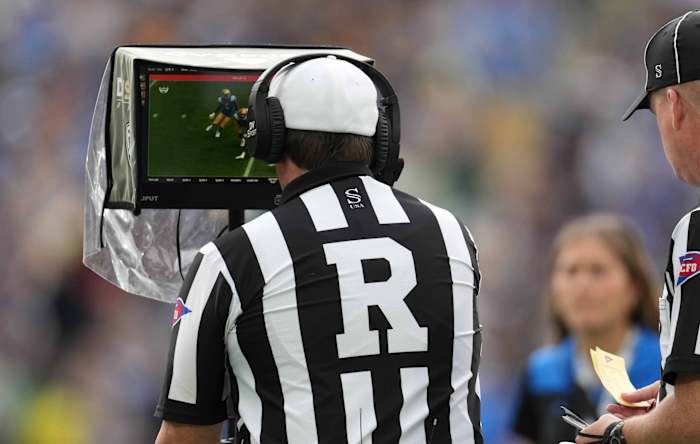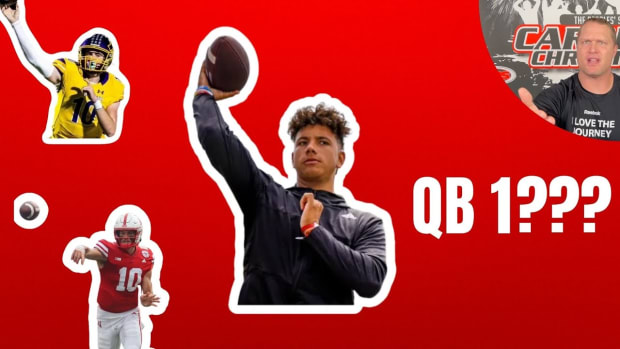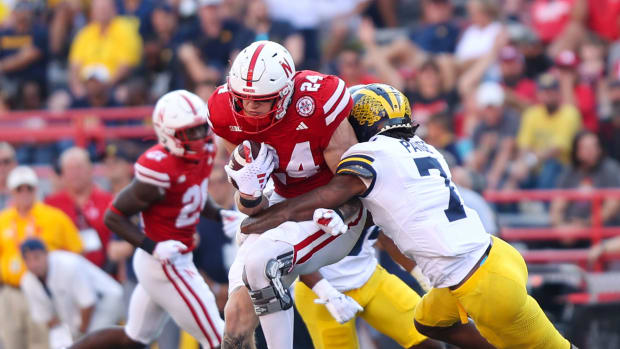Tad Stryker: Don’t Cut the Action in College Football
The desire to reduce the length of televised major college football games is a legitimate one, but it would be better to cut some fat out of the package, instead of muscle or bone.
Four game-shortening proposals under consideration by the NCAA Football Rules Committee are aimed at changing longstanding successful rules of the game. I question both the necessity and the wisdom of that.
Before I discuss the proposals, let’s deal with a blatantly dubious argument right up front. Some committee members are calling this a safety issue, claiming that reducing the number of plays per game is needed to protect players from injury. They cite statistics that show the average Football Bowl Subdivision game has about 180 plays, while NFL games average 154. First off, a quick check of Nebraska team statistics for 2022 reveals there were about 161 plays per Husker game, so I question the figure the committee came up with. But just for fun, let’s use that questionably high figure. That’s only 15 percent more plays per game than in the NFL last year.
What the committee members fail to mention is that each FBS team typically uses more than 60 players in an average game, while NFL teams commonly use only about 43, which means there are about 40 percent more players taking snaps in a FBS game compared to the NFL. When you consider number of snaps per player per game, I’m skeptical that this issue rises to the level of a legitimate college football safety risk.
Game length creep is a real problem, though. I weighed in on this topic six years ago, and it’s high time to revisit.
In the 1970s, the average non-televised college football game rarely lasted more than 2 hours, 45 minutes, and televised games almost always ended within 3 hours. Now they’re up to 3 hours, 27 minutes, according to an Associated Press story.
How does the committee intend to deal with that issue? The four proposals are:
- Prohibiting consecutive timeouts.
- No untimed down at end of first or third quarters.
- Clock runs after first downs except inside of 2 minutes remaining in a half.
- Clock runs on incompletions once ball is spotted.
The first has some merit. I can see pluses and minuses. As for the rest, well, these are not good proposals. They all would result in fewer plays per game. Let’s not reduce the amount of action in the game. People watch football because of the action. Athletes play football for the same reason. Let’s address the real problem — the amount of dead time during a telecast. Attack the two areas that are 90 percent responsible for dragging out telecasts — TV time outs and video review.
Frankly, proposals to reduce action in a college football game while keeping the same amount of TV time outs are nothing more than craven obeisance to television executives, designed to allow advertising to eat up an even larger percentage of every college football broadcast than it does now. Does that increase your excitement for the game? If you think that big money is ruining college football, these proposals are another step down that road.
Television timeouts could be managed much better than they are. Get rid of at least two TV time outs per half. That in itself would cut 12 minutes off game length.
Can we at least consider encouraging the TV execs do their jobs, for pity’s sake? They can restructure their advertising contracts and creatively keep their revenue at current levels, and possibly even increase it. They could reduce the number of commercials, and since the remaining real estate would be more valuable, raise their rates. This is not a complicated concept.
If you’re afraid my idea will condemn TV networks and institutions of higher learning to bankruptcy, consider that ABC/ESPN, FOX, NBC and CBS could run more split-screen 15-second ads between plays. I’m not suggesting we get rid of TV commercials. They will continue to be a tremendous source of revenue, passed along to college athletic departments.
Moving on to video reviews, it seems to me the pace has gone from slow to glacial over the past six years. The reason for video review is to correct obvious errors by officials, not to “get every call right,” straining at gnats and obsessing over minutiae, which is pretty much what video review has devolved into. And while we’re slowing the game to a snail’s pace, we’re still not getting every call right. Set a 90-second limit for each video review and stick to it. If that’s not enough time to review a call, the play is too inconclusive to be settled, anyway. If it’s not conclusive, just go with the original call and keep the game moving. Even if, for safety reasons, we leave current video review rules for targeting unchanged, this would save five to eight minutes per telecast.
Make video review rules at the FBS level similar to the NFL’s. Cut back on booth-initiated replays. Make head coaches throw the challenge flag before you call in the “sky judge.” Reward coaches for successful challenges (which is where the NFL misses the boat), possibly giving them an exra challenge to use if they win two in a row. Leave the action in the game and cut the dead time. The product will improve, broadcast lengths will shrink, and the game will thrive.





